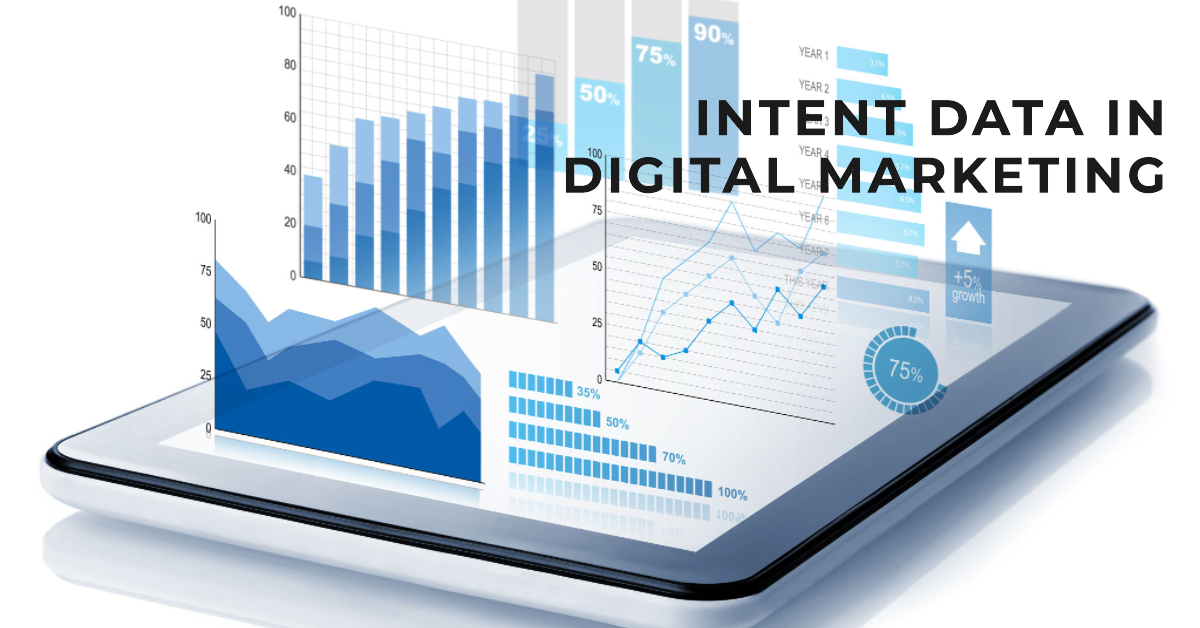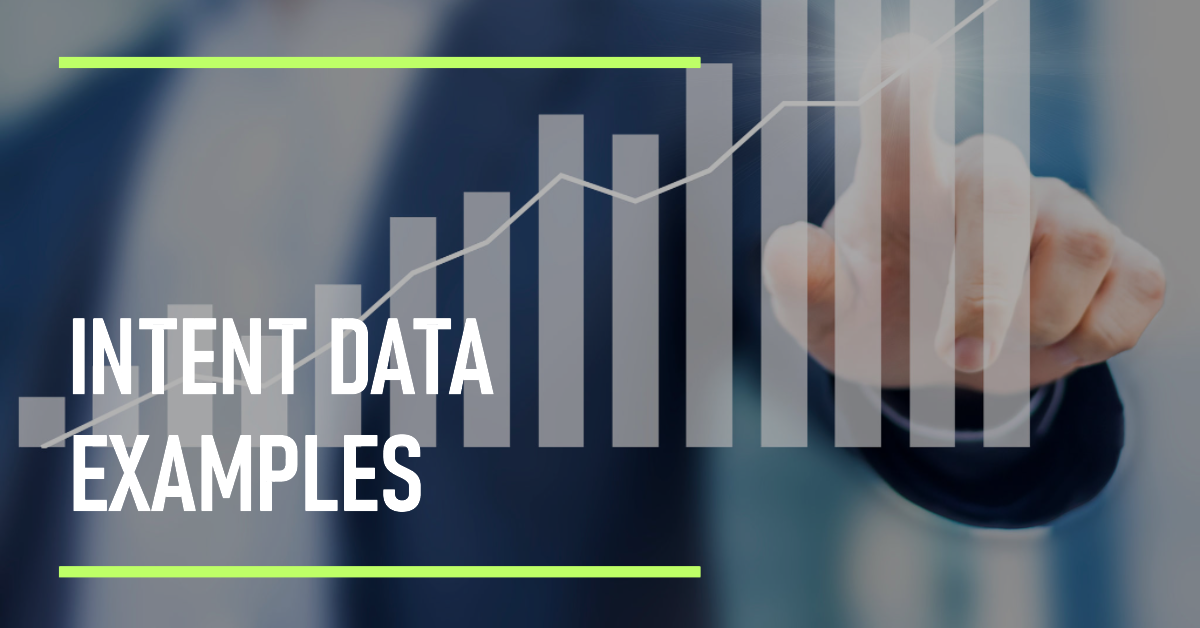As we navigate the labyrinth of modern marketing strategies, it becomes clear that the consumer buying process has dramatically evolved. The digital age has rendered conventional marketing methods somewhat obsolete and replaced them with more sophisticated tools – one of the most powerful among them being "intent data." This article seeks to demystify this term, offering insights into what intent data is, its myriad benefits, and how it can be harnessed to revolutionize your B2B marketing and sales operations. Understanding and effectively utilizing intent data can be the key to unlocking untold potential in your marketing campaigns, providing the edge needed in today's competitive marketplace. So, join us as we delve deeper into the world of intent data and its transformative implications for your business.
What is Intent Data?

Definition of Intent Data
In the context of digital marketing, "intent data" refers to the insightful compilation of behavioral signals and patterns that potential buyers, or users, leave behind during their online activities. These digital footprints, indicative of their interests and purchase intentions, can be gleaned from a variety of actions, such as webpage visits, content downloads, social media interactions, and even product reviews. It represents a rich and detailed source of information that can help businesses decipher what their customers are looking for and when they might be ready to make a purchase.
Collecting intent data is a way to understand users' intentions more accurately. It comes in two forms: first-party intent data and third-party intent data. First-party data is collected directly from your owned digital properties, like your website or app, while third-party data is gathered from external platforms and can provide a broader view of user behavior across the web. We'll talk more about intent data types below.
Overview of Benefits
Harnessing intent data can open up numerous opportunities for a business. It provides valuable insights into the mind of the customer, empowering companies to engage with their audience more effectively. Some key benefits of using intent data include:
- Improved Customer Targeting: By understanding the customer's intent, businesses can tailor their marketing efforts to target the right audience at the right time.
- Enhanced Personalization: Intent data can help businesses deliver personalized content that resonates with the customer, boosting engagement and ultimately leading to higher conversion rates.
- Sales and Marketing Alignment: When marketing and sales teams have access to the same intent data, they can collaborate more effectively to convert leads into customers.
- Better Product Development: Understanding customer intent can also guide businesses in developing products or services that meet the needs and desires of their customers, thereby ensuring customer satisfaction and loyalty.
- Predictive Analytics: Intent data allows businesses to forecast future purchase behavior, enabling them to anticipate market trends and stay ahead of the competition.
Types of Intent Data
In the world of digital marketing, intent data isn't a one-size-fits-all concept. In fact, it can be categorized into several types, each with its own unique set of advantages and applications. To fully grasp the potential of this powerful tool, understanding the types of intent data is essential. Primarily, there are two categories to consider: first-party intent data and third-party intent data.
First-party Intent Data
First-party intent data is the information that a business collects directly from its own digital properties. This could include user behavior on the company's website, interaction with the business's social media pages, or engagement with email newsletters and other direct marketing efforts.
This type of data is inherently specific to the business collecting it, offering a highly detailed picture of user activity. Businesses can gather first-party intent data through various means, such as tracking website analytics, monitoring email open and click rates, or analyzing social media interactions.
First party intent data can provide invaluable insights into a customer's preferences, behaviors, and potential buying intentions, giving businesses the opportunity to:
- Personalize marketing content.
- Improve customer engagement.
- Optimize sales strategies.
Third-party Intent Data
Third-party intent data, on the other hand, comes from external sources, typically platforms or services that aggregate data from multiple websites or digital channels. It provides a broader view of a user's online activities beyond a single company's digital properties, capturing their engagement with various websites, blogs, forums, and even competitor sites.
Third-party intent data offers a broader perspective, helping businesses to:
- Identify potential new leads outside their existing customer base.
- Gain insights into broader market trends.
- Understand the competitive landscape.
While both first-party and third party intent data have their strengths, using a combination of both can provide a more comprehensive view of customer intent. This holistic approach allows businesses to more effectively target their marketing efforts, drive engagement, and ultimately increase sales.
Intent Data Examples

Let's take a look at some concrete examples of intent data and how they can be utilized:
Website Interactions
One of the most common sources of intent data is website interactions. This could include which pages a visitor views, how long they stay on each page, and which links they click. For example, if a user spends a significant amount of time on a product page or downloads a product brochure, it indicates a strong interest in that product and suggests they may be considering a purchase.
Content Downloads
If a user downloads a piece of content, such as a white paper, an eBook, or a case study, this signals a high level of engagement and interest in the topics covered by that content. Marketers can use this data to gauge the user's stage in the buying cycle and to tailor future content and communications to their interests.
Email Engagement
Email engagement is another valuable source of intent data. Marketers can track which emails a user opens, how long they spend reading them, and whether they click on any links. If a user consistently engages with emails about a particular topic or product, this indicates a strong interest in that area.
Social Media Activity
Social media platforms provide a wealth of intent data. By monitoring a user's likes, shares, comments, and follows, businesses can gain insights into their interests and preferences. If a user frequently engages with posts about a specific product or topic, this suggests they may be a qualified lead in that area.
Search Queries
The search terms that a user enters into a search engine can reveal a lot about their intentions. If a user is regularly searching for information about a certain type of product or service, it's a strong indicator that they're in the market for that product or service.
Digital Ad Responses
A user's response to digital ads, whether they're clicked, ignored, or blocked, can also provide valuable intent data. A high click-through rate on an ad for a specific product suggests that users are interested in that product.


By analyzing these various forms of intent data, businesses can get a better understanding of their customers' needs and desires, allowing them to tailor their marketing efforts for maximum impact.
Intent Data Providers
While many businesses gather their own first-party intent data, they often rely on external providers to supplement this with third-party data. Intent data providers are specialized companies that collect, aggregate, and analyze vast amounts of online user behavior data from a variety of sources. They then sell this data or the insights derived from it to businesses. Here are some key things to understand about intent data providers:
Role of Intent Data Providers
Intent data providers help businesses uncover broader behavioral patterns beyond their own digital properties. They monitor activities across multiple websites, forums, blogs, social media platforms, and more. Their services allow businesses to gain a more comprehensive view of potential customers' interests, activities, and intent.
Benefits of Using Intent Data Providers
Partnering with an intent data provider can offer several benefits:
- Expand Your Reach: Intent data providers can help you identify potential leads that you might not have reached through your own marketing efforts.
- Gain Industry Insights: They can provide insights into wider market trends and behaviors, helping to inform your strategic planning.
- Understand Competitor Activity: By monitoring activity on competitors' websites, you can gain insights into what's working for them and identify opportunities for your own business.
Choosing an Intent Data Provider
When selecting an intent data provider, there are several key factors to consider:
- Data Quality: Ensure that the provider collects high-quality, accurate, and reliable data.
- Data Relevance: The data provided should be relevant to your industry and target audience.
- Data Coverage: The provider should have a wide network of data sources to ensure comprehensive coverage.
- Data Privacy Compliance: The provider should adhere to all relevant data privacy laws and regulations.
By utilizing the services of an intent data provider, businesses can significantly enhance their understanding of customer behavior and intent, thereby refining their marketing strategies and improving their overall sales performance.
How to Leverage Intent Data
Identifying New Leads
One of the primary applications of intent data in B2B marketing and sales is identifying new leads. By analyzing the digital footprints of potential buyers and their interaction with your content, you can determine who is likely to be interested in your products or services. Furthermore, it allows you to:
- Discover accounts showing buying signals.
- Enhance lead scoring and lead nurturing strategies.
- Shorten the sales cycle.
Prioritizing Existing Customers
First-party intent data can help businesses understand the reading habits and preferences of their existing customers. This information is crucial for:
- Segmenting customers based on their purchase history.
- Upselling or cross-selling opportunities.
- Personalizing content and improving customer experience.
Understanding Reading Habits
B2B intent data also offers invaluable insights into the content preferences and consumption patterns of potential buyers. This information helps businesses create engaging and relevant content that resonates with their audience, thus increasing the chances of conversion.
Taking Action on Intent Data
Simply collecting intent date isn't enough; businesses must also act on it. The actionable insights derived from intent data marketing can help businesses in:
- Timing their marketing and sales efforts for maximum impact.
- Personalizing their marketing messages.
- Enhancing account-based marketing strategies.
Summary of Intent Data Benefits
By now, the benefits of intent data should be clear. Its use can lead to improved customer engagement, increased sales, and more effective marketing campaigns. From identifying new leads and prioritizing existing customers to understanding the reading habits of your audience and taking decisive action, intent data is undoubtedly a powerful tool for any B2B business.
Final Thoughts
In conclusion, intent data is a game-changer in the realm of B2B marketing and sales. Whether it's identifying the right accounts, delivering personalized content, or making accurate sales predictions, intent data can revolutionize the way businesses operate and interact with their customers. To truly leverage this powerful tool, businesses need to understand what is intent data, how to collect it, and most importantly, how to effectively use it. The future of marketing is here, and it is data-driven. Embrace intent data today, and equip your business with the power to offer the right solutions at the right time.
Personalized responses to new clients from Facebook/Instagram. Receiving data on new orders in real time. Prompt delivery of information to all employees who are involved in lead processing. All this can be done automatically. With the SaveMyLeads service, you will be able to easily create integrations for Facebook Lead Ads and implement automation. Set up the integration once and let it do the chores every day.
